Why a tiny Sydney suburb is signposted to on major roads across the city
It’s perplexing to drivers. Why do small suburbs take pride of place on big road signs? It’s a subtle game planners are playing with your head.

On the Road
Don't miss out on the headlines from On the Road. Followed categories will be added to My News.
In Sydney’s inner suburbs, it can feel like all roads lead to Sydenham.
On major thoroughfares, emblazoned on road signs, Sydenham takes pride of place. But it puzzles many motorists as to why it gets all the attention.
Sydenham is hardly Sydney’s most notable neighbourhood. It contains a railway station, a burnt down pub and a Bonds underwear outlet.
It would have more houses, but loads were demolished because, being close to the end of the airport runway, no one wanted to live beneath the incessant screech of jet engines.
So how has a small suburb of barely 1000 people become so prominent on roads signs?
And why does Marrickville, next door to Sydenham, with 25 times the residents and clearly more important, barely get a mention?
It’s one of the peculiarities of Australia’s road signs that are not what they may seem. While they appear to be directing you to a suburb, under the surface they’re actually playing a subtle secret game with your head, the aim of which is to get more people where they need to go more efficiently.
It’s a similar reason why Melbourne roads have signs to Sydney, but Sydney roads don’t return the favour with signs to Melbourne.
RELATED: Roundabout rule leaves drivers stumped

Sydenham isn’t the only little locality to see its name lit up on major roadways. Semi-rural Horsley Park, in Sydney’s west (population 2000), is also seen for miles around.
Menai’s glory on signs outweighs its actual size. Bonshaw, in northern New South Wales, is signposted from more than 100 km away despite it having a population of just 100 people. Then there’s Somerton, in Melbourne’s north, that has a resident population of precisely zero.
One theory is that suburbs on signs are decided on the basis they sport a post office. That’s not the case, but post offices do play a key role in road signs.
RELATED: Test your science know-how with our easy quiz
RELATED: Is this one of Sydney’s most dangerous interchanges?

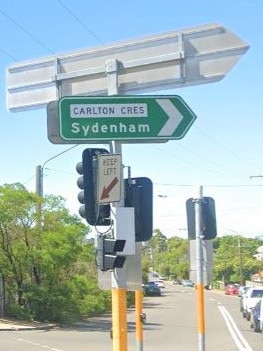
SMALL SUBURBS ON BIG SIGNS
Real estate on road signs is precious. Transport authorities want to relay the most amount of information in the swiftest time possible with the least amount of words.
The last thing a sign should do is have so many destinations that you rear end the car in front as you search for exactly the place you’re heading for. So authorities are ruthless on ditching destinations from signs.
Transport for NSW (TfNSW) told news.com.au that destinations on signage is “determined by a number of factors including the type of road, nearby strategic locations, and key decision points for motorists”.
One way it does this is, is by only featuring so-called “focal point towns”.
“Focal point towns are normally the next town of importance along a route,” so states the NSW’s extremely thorough guide to signposting.
Makes sense. But some of these focal points are arguably not that important. This is when size really doesn’t matter, it’s what else the suburb features that gives it the edge.
“Focal point towns may sometimes be smaller than other nearby towns but may be more strategically located, eg, at the junction of two highways,” says the guide.
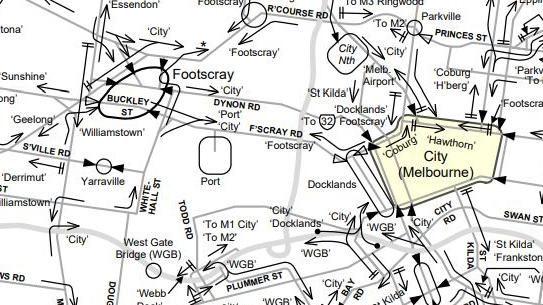
And that’s where all these petite places come in. Sydenham, Horsley Park, Bonshaw, Somerton and the like may well be tiny but they contain major interchanges.
Sydenham is where the A1 Princes Highway meets roads heading west. If you’re heading from the west of Sydney to the airport it’s very possible you’ll drive through it.
So it’s less about getting you to Sydenham, and more about subtly pointing you in the correct general direction and to a big intersection where you’ll then be presented with another choice of suburbs, that will then nudge you closer to where to your final point.
Only these focal points can be on intersection signs. So it doesn’t matter how big the suburb you pass through on the way – like a picky nightclub bouncer, if its name’s not on the list, it’s not coming in.
RELATED: State’s red light camera fines challenged
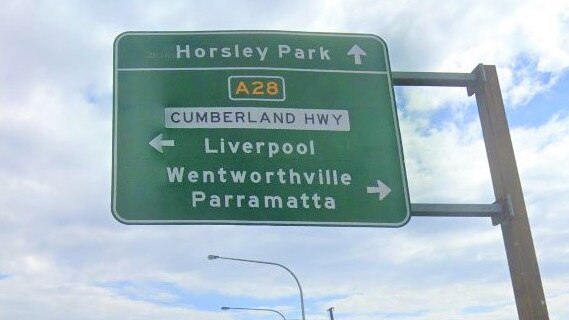
NOT JUST AUSTRALIA
A similar practice happens in the UK. Often major cities (London, Edinburgh, Manchester) are on signs.
And then you get places like Scotch Corner, Llangurig and Consett constantly re-occurring.
Scotch Corner isn’t even a place, but a roundabout. However, it’s an important roundabout and is a reassurance to motorists that there vaguely heading towards Scotland.
These little motorist mind games vary from state to state. VicRoads demands that on major signs that show distances to destinations, the next major capital city should be displayed. So if you’re heading up the Hume Highway from Melbourne to Wagga, seeing a sign saying Sydney should comfort you that you’re going the right way.
But try as you might, you won’t find a sign for Melbourne in Sydney.
TfNSW has a different method. It states only four longer distance destinations can be shown on signs from Sydney – Newcastle, Wollongong, Canberra and the Blue Mountains. But they’re still nudging you down the right path.
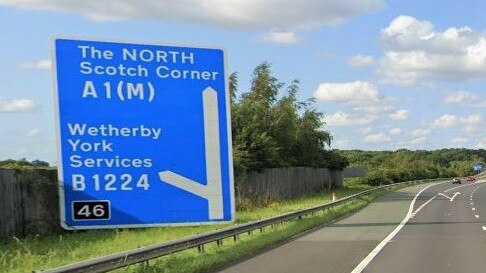
POST OFFICES, OBELISKS AND MILESTONES
And what of the post offices? They do have a role to play, and they’ve been doing so for quite some time.
All those signs that have distances on them have to be measured from somewhere. Often it’s the local post office in that town. If its 276 km to Broken Hill, that’s specifically 276 km to Broken Hill post office from where you can mail off a postcard all about your outback travels.
Signs to Sydney don’t go to the GPO though. Instead, they are measured from a small park surrounded by skyscrapers close to Circular Quay.
In the middle of Macquarie Place Park is a monument simply called the “obelisk”. Erected in 1818 by Governor Lachlan Macquarie it is Australia’s second oldest European monument. Its singular role, for more than 200 years, has been as a milestone from which all distances from Sydney are measured.
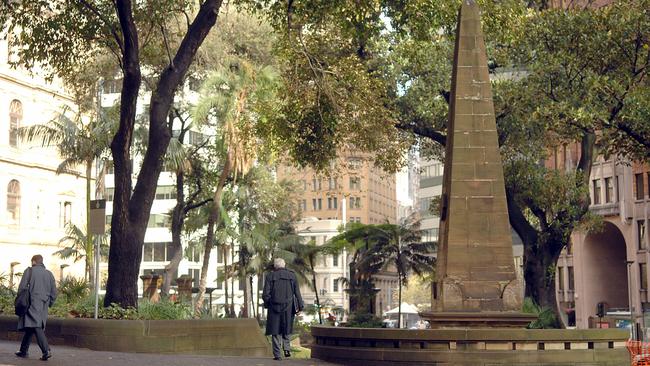
Etched onto the obelisk are the distances to Parramatta, Liverpool and Windsor. But only as far west as Bathurst, as colonists hadn’t penetrated any further into Australia when the Obelisk went up.
Sydenham, the small suburb that punches above its weight on signs is worth a visit. These days several craft breweries call it home. Oh wait, they don’t. Sydenham is so small, even the breweries, are officially somewhere else.
But at least you’ll never get lost getting there.
Originally published as Why a tiny Sydney suburb is signposted to on major roads across the city

